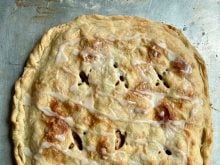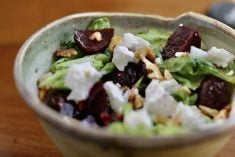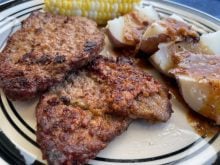The home canning of fresh fruits and vegetables is an old art that requires the precise use of modern techniques to ensure a safe quality product.
Food pH is a measure of its acidity, with 4.6 or lower meaning acidity is high. A high acid environment inhibits growth of bacteria and other spoilage organisms, but it is not enough to preserve food. Heat processing must be applied for a length of time to inactivate enzymes, yeasts and micro-organisms.
High acid food includes fruits, fruit juices, jams, jellies, fruit spreads, pickles, relish, salsa, chutney and tomatoes with added acid (lemon juice or vinegar). All high acid foods must be heat processed to 212 F (100 C). This is the temperature of boiling water and can be achieved in a canner. Individual recipes should indicate the length of time to process the food.
Read Also

Understand limitation periods if considering civil suit
A limitation period refers to the amount of time a plaintiff has to commence a formal claim in court or lose their ability to pursue it.
Low acid foods include vegetables, meat and game, poultry, seafood, soups, stews, tomato-vegetable sauces and tomato-meat sauces. These foods must be heat processed at temperatures of 240 F (116 C) to destroy the growth of clostridium bolulinum.
Clostridium bolulinum is destroyed at boiling temperatures, but it has the ability to form hardy spores that can survive the boiling. These spores thrive in a low acid environment without air and give off a deadly toxin known as botulism. Botulism does not change the colour, taste or odour of food, so if the jar is not sealed, throw it out.
Boiling water canners cannot reach the temperature needed to kill the spores so low acids food must be processed in a pressure canner. Clostridium bolulinum spores do not grow in the presence of acid so high acid foods can be safely processed in a boiling water canner.
During the boiling water canning process, food-filled jars are heated to exhaust air from the jars. This causes the atmospheric pressure inside to be less than outside the jars.
After the jars are removed from the water, the outside pressure pushes the metal lid down and the sealing compound on the edge of the lid conforms to the rim of the jar to create a hermetic seal. This airtight seal prevents micro-organisms from contaminating the food during storage.
It is essential to heat process all filled jars of home canned foods to create an adequate vacuum seal for food safety and the preservation of flavour and quality.
Visually examine all jars for nicks, cracks and sharp edges, discard damaged jars. Uneven edges will prevent an airtight seal. Use only Mason jars designed for home canning because the glass is tempered to withstand the heating process.
The jar rim must be clean before the sealing lid is used to ensure an airtight seal. Use a canning funnel and clean paper towel dampened in hot water to clean the jar rims.
Removing as much air from the jar as possible is also essential to ensure an airtight seal. When the jar is filled, use a non-metallic utensil to slide down the side of the jar to release trapped air bubbles.
Fruits need to be heated in the canning liquid to remove air from their cells. If this is not done, the fruit will float and discolour.
The unfilled space between the top of the food or liquid and the underside of the lid is called headspace. For jams and jellies, use 1/4 inch (0.5 cm) head space and 1/2 inch (1 cm) for fruit, pickles, tomatoes, chutney and relish. This allows for food expansion as jars are heated and for the formation of a strong seal as the jars cool.
Heat the sealing lids in hot water, but do not boil because this will lessen the effectiveness of the sealing compound. Use a magnetic lifter to remove the lids from the hot water. When placing the sealing lid and metal ring on the jar, tighten until fingertip tight only.
Heat the jars prior to filling in a water-filled canned. Remove one jar at a time, fill with hot food, then return to the canner to stay hot while the other jars are filled. Cover all of the filled jars with at least one inch (2.5 cm) of water. Cover the canner and bring to a full rolling boil. Heat for the time specified in the recipe.
At the end of the processing time, turn off the heat and remove the canner lid and allow the water to quit boiling. Use a canning jar lifter to remove the jars without tilting to a folded towel to cool. Do not disturb for 24 hours and do not retighten the screw bands. After 24 hours, check that the sealed lids are curved downward and do not move when pressed.
For more information, visit homecanning.ca, healthycanadians.gc.ca.
















